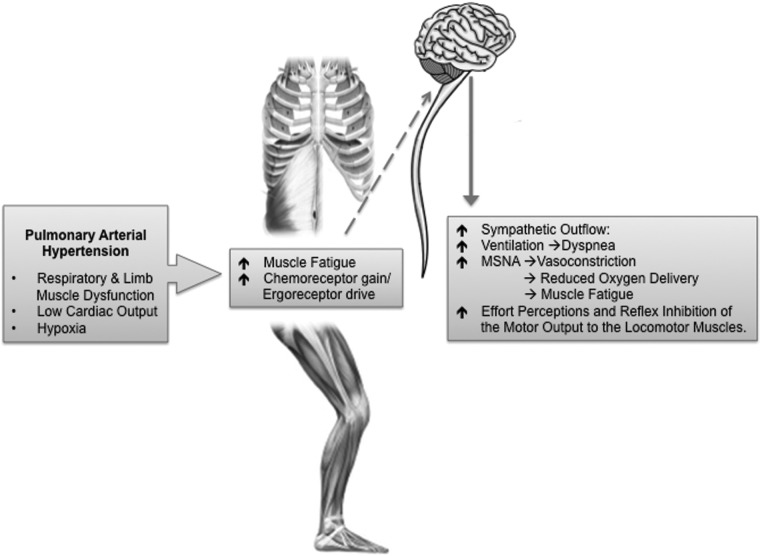Figure 2.
The muscle hypothesis. Muscle work and accumulation of products of muscle metabolism during exercise lead to augmented chemoreceptor gain and ergoreceptor drive in the impaired skeletal musculature. This leads to enhanced transmission to the CNS through sensitive, afferent unmyelinated nerve fibers. The CNS responds with increased sympathetic efferent discharge to the peripheral muscles (MSNA), which causes vasoconstriction and limitation of blood flow and oxygen transportation to the exercising skeletal muscles, thus promoting fatigue and premature cessation of exercise. Finally, enhanced sympathetic drive promotes hyperventilation and breathlessness. MSNA: muscle sympathetic nerve activity; CNS: central nervous system.

